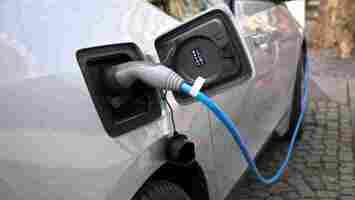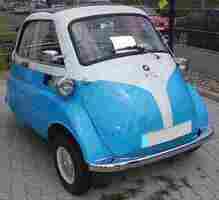London DOUBLED its number of rapid EV chargers in 2020 — nice
This article was originally published by Christopher Carey on Cities Today , the leading news platform on urban mobility and innovation, reaching an international audience of city leaders. For the latest updates follow Cities Today on Twitter , Facebook , LinkedIn , Instagram , and YouTube , or sign up for Cities Today News.

London hit the target of adding 300 more electric vehicles (EV) rapid charging points to its network before the end of 2020, bringing the total number of rapid chargers in the UK capital to over 500.
The chargers, which are primarily used by commercial vehicles such as taxis and delivery drivers, are designed to provide a quick charge in 30 minutes.
London’s boroughs have also delivered more than 2,000 on-street residential charge points through the Go Ultra Low City Scheme , with more than 3,000 forecast to be delivered by spring this year. Both projects, and a grant scheme to help taxi drivers switch to electric vehicles, are funded by the government’s Office for Zero-Emission Vehicles (OZEV) .
Working with BP Pulse and ESB Energy as charging point operators, Transport for London (TfL) met the target despite works being paused from April to June 2020 due to the COVID-19 pandemic.
Alex Williams, TfL’s Director of City Planning, said: “Rapid charging points will play a key part in decarbonizing transport and the shift to cleaner vehicles. To help drivers make the switch from older, more polluting vehicles to electric, they need the confidence that plugging in will be convenient and hassle-free.”
A recent report by the International Council on Clean Transportation revealed London was top of a league of European cities regarding polices to grow its EV market.
London Mayor Sadiq Khan’s Electric Vehicle Infrastructure Delivery Plan has projected a sharp rise in demand for charging infrastructure, estimating that by 2025 the city may need up to 4,000 rapid charging points and up to 48,000 residential chargers as more and more people and businesses move to electric vehicles.
Cost still a factor
Nearly eight in ten UK motorists (78%) think that electric cars are still too expensive when compared to conventional vehicles of a similar size, according to research from the latest RAC Report on Motoring.
The report found that 9% of the 3,000 respondents to the study said they intended to make a switch to electric the next time they change their vehicle – up from 6% in 2019 and 3% a year earlier.
More than half of drivers (53%) said they would like to see VAT on zero-emission vehicles either cut or abolished entirely, with a slightly smaller proportion (48%) favoring a scrappage scheme to make switching more affordable.
RAC Data Insight spokesman Rod Dennis said: “With 2030 now clearly set as the date for the end of the sale of new petrol and diesel cars and vans, momentum behind getting more of us into EVs is building – and it’s clear that an increasing proportion of drivers are responding.
“But the single biggest barrier to a driver choosing an electric car over one powered by petrol or diesel has to cost.
“Although good finance leasing deals and offers such as free home charging for a set period can help, it appears to be the case that the price of many new EVs remains prohibitively high for a lot of people, with most drivers keen to see more financial help from the government to bring costs down.”
Almost one in three motorists (30%) favor a £1,000 (US$1,367) increase to the current Plug-in Car Grant, which would take it up to £4,000.
Other European countries, such as Norway, have introduced tax-cutting measures on the purchase of new EVs that have dramatically increased EV ownership.
SHIFT is brought to you by Polestar. It’s time to accelerate the shift to sustainable mobility. That is why Polestar combines electric driving with cutting-edge design and thrilling performance. Find out how .
A blockchain connected motorbike: what Web 3.0 means for mobility and why you should care
We’ve been hearing about the potential of Web 3.0 for years, a decentralized web where information is distributed across nodes, making it more resistant to shutdowns and censorship. Specifically, its foundation lies in edge computing, artificial intelligence, and decentralized data networks. But what we haven’t talked enough about, is the massive impact Web 3.0 will have on mobility.

Web 3.0 aims to build a new scalable economy where transactions are powered by blockchain technology, eschewing the need for a central intermediary or platform. And in the mobility space, there are lots of things happening.
Um, but how does Web 3.0 relate to mobility?
Over the next few weeks, I’m taking a look at a bunch of startups that are integrating mobility and the potential of Web 3.0 into their product offerings in interesting ways.
For the sake of brevity, I’m going to assume that if you’re reading this far without your eyes glazing over, you probably have a basic, if not working, understanding of Web 3.0 and blockchain tech.
I’m going to simplify a bit and include plenty of juicy links for added context (and not just ones written by the companies themselves shilling their products).
So let’s dive into one of the ways Web 3.0 has already begun to alter mobility.
Introducing Pave Motors and its electric motorbike


Pave Motors is a mobility company founded by two brothers that produce an electric “fusion of bike and motorcycle.” But its sleek Pave 1 emotorbike isn’t the only ace up the company’s sleeve, as it’s also doing some nifty things with data and sharing.
I spoke to founder Nicolaus Nagel, who founded the company in 2019 with brother Caspar Nagel. He told me the bike was a convergence of his passions for ebikes and blockchain tech. He shared:
Sounds promising, so let’s take a quick look at the bike’s functionalities. It weighs 45 kilograms (99 pounds) and can operate at a maximum speed of 48 kmph (30 mph) and a range of between 80 kilometers and 105 kilometers (50 to 65 miles).
A 50.4 V 39 Ah lithium-ion battery powers the bike and can be charged up to 80% in just 90 minutes or fully charged in three hours.
So where does the blockchain come into it?
Pretty cool overall… but where does the blockchain come into it? Well, according to Nagel there are several central tenants:
Pave Bikes connect to a private blockchain network. When you get your bike, you receive a non-fungible token ( NFT ). This is effectively a private key or token-based on ERC721 . It is used to unlock the ebike via the Pave+ App.
To be exact, the Pave mobile app is technically a dApp, a decentralized application connected to the blockchain. It enables riders to securely authenticate their proof of purchase and access their bike using Bluetooth, even without an internet connection.
You’ve probably heard those stories of people using Tile to locate a missing bike? Even when they find it, they usually need a bunch of documentation to prove they are the owner. The team at Pave Motors is betting on blockchain to get rid of the unnecessary hassle.
Further, the digital key helps stop bike theft. Okay, it doesn’t chain your bike to a lamppost. But the private key means that any theft leaves the offender with an unusable ‘dumb’ motorbike.
Bikes from established ridesharing companies can have low mileage, limit your geography with geocaching, and the hourly fees can really add up.
However, there are few services available that enable you to rent out your own ebike. In my research, I could only find one, ListNRide , which is limited to Europe and includes services fees for the hirer and hiree.
Pave is creating an easy way to share your bike with others. An ebike is a pretty significant investment, so it follows that even if you know the person you are renting it out to, you want an easy way to manage the rental. Internet-connected stuff is great until you want to share the connectivity with someone else (I at least struggle with sharing my smart home devices every time I get a cat sitter).
Further, Pave makes it possible for bike owners to securely share their bikes with other riders, either for free or for payments in cryptocurrencies or USD). They can create their own custom smart contracts. Users can also complete challenges to earn Pave rewards, and receive discounts and special offers. Pave rewards are ERC20-based tokens to use within the Pave network.
“This capability has attracted a lot of interest,” Nagel told me. “Not only from people interested in crypto and blockchain but also bike enthusiasts who like the idea of an easy way to share and track their bikes.”
3. The IoT data economy is pure Web 3.0
One of the most interesting aspects of Pave is the platform is built on the Streamr Network . Each bike runs on a light Streamr node which unlocks the Pave bikes’ V2X (vehicle-to-everything) functionality.
As a result, the bikes can interact with network service providers, the environment and infrastructure around them (V2I), or even with other bikes (V2V). There’s a future capacity for decentralized fleets.
Building on Streamr removes the need to use centralized message services like AWS or Google Cloud for data transport.
The opportunity for new data monetization
Think of the number of sensors and data entry points on an ebike and the associated devices and equipment. What if this data could be part of a larger machine economy? IoT-connected devices could trade between them storage, computation, analytics, sensor data, and even electricity.
Streamr has developed a new marketplace and data economy where IoT data can be bought and sold. This provides the capacity for Pave users to share and potentially monetize their transport data. Bikes generate data such as routing, road congestion, and mechanical feedback.
Pave owners could hypothetically sell this data. Potential customers include city planners, road maintenance authorities, highway agencies, and various suppliers from tire makers to brake manufacturers.
Further, more and more bike companies are looking at the idea of the circular economy . In these, the relationship between materials suppliers and bike makers is evolving. And the value of data becomes even greater in design and material innovation.
It’s been a long road for Pave. According to Nagel, there have been seven prototypes and over 50 concepts. But now, they are in pre-production and open for pre-orders. Pricing starts at $108 a month or $3,900.
This is the first part of a series I’m writing about Web 3.0 and blockchain technology in mobility. I’m attempting to reduce the jargon and focus on the problems the tech aims to solve. Check out the second piece where I dive deep into how one motorbike company uses blockchain technology for P2P trading.
You may also enjoy:
The DeLorean is returning as an EV — and I want more classic car comebacks
Unpainted stainless steel body. Gull-wing doors. Plutonium-powered time-travel capabilities. Yes, it’s the DeLorean.

Despite its many troubled years , the DeLorean has left its mark in automotive history, and it even turned into a pop-culture icon after the Back to the Future film franchise.
Now, folks, it’s getting resurrected to claim its place in the world of EVs .
If this tweet hasn’t satiated your curiosity or excitement, I feel you. The short teaser video only gives us a few hints about what to expect:
It’s going to be called “DeloreanEVolved” — an expected, but cool name.
It’s going to be a luxury EV.
We’re going to see it this year (oh, boy!).
The gull-wing doors are staying. Can I get a “HELL YEAH?”
Plus, we know that the company will start building the vehicle at its new global headquarters in Texas .
The DeLorean’s comeback has made me think of two things: first, I want to rewatch Back to the Future , and second, I want MORE classic cars electrically revived.
So, with that in mind, here are my picks for the cars begging for an electric resurrection:


The current Microlino 2.0 bears an uncanny resemblance to the Isetta (and will soon hit the European streets), but I simply want the ULTRA-CUTE original brought back to life.
A pick-up truck with a cool convertible vibe? I’m sold.
Yes, I know, it’s the weird three-wheeler from Only Fools and Horses , but why should Back to the Future have all the fun?
Okay, Opel has already built its electric version, the Opel Manta GSe ElektroMOD . The problem is, it’s just a showcase concept car — and that ISN’T ENOUGH.
Its front kinda looks like Donald Duck’s beak, but the TVR Tasmin was an impressive machine for its time. With a powerful engine capable of going 0-60mph in just five seconds, it’s the sort of car David Hasselhoff would solve crimes in.
Are there any classic cars you’d like to see electrified? Then let us know — and we’ll feature the best in a follow-up story. You can email me or tweet us right here .